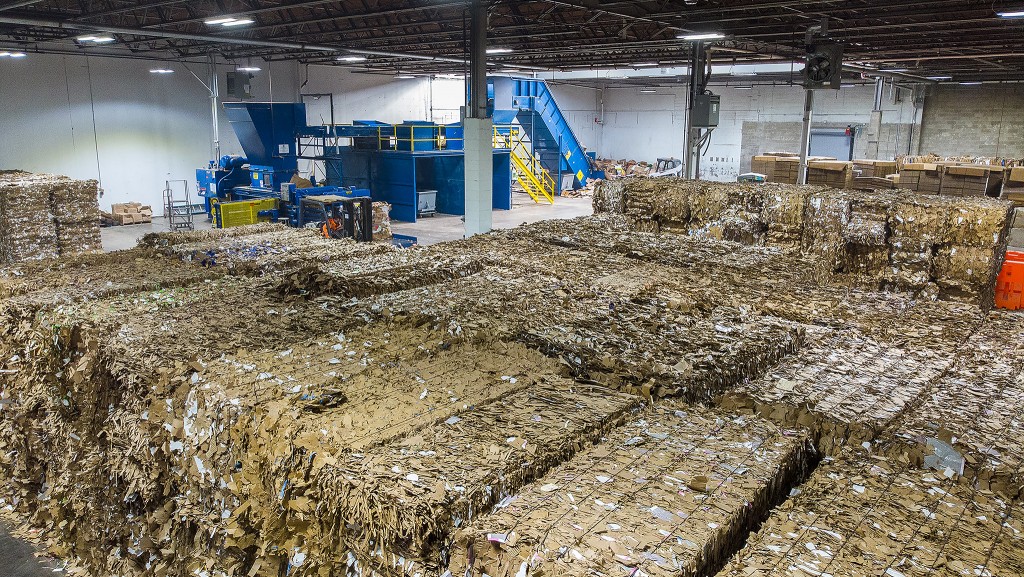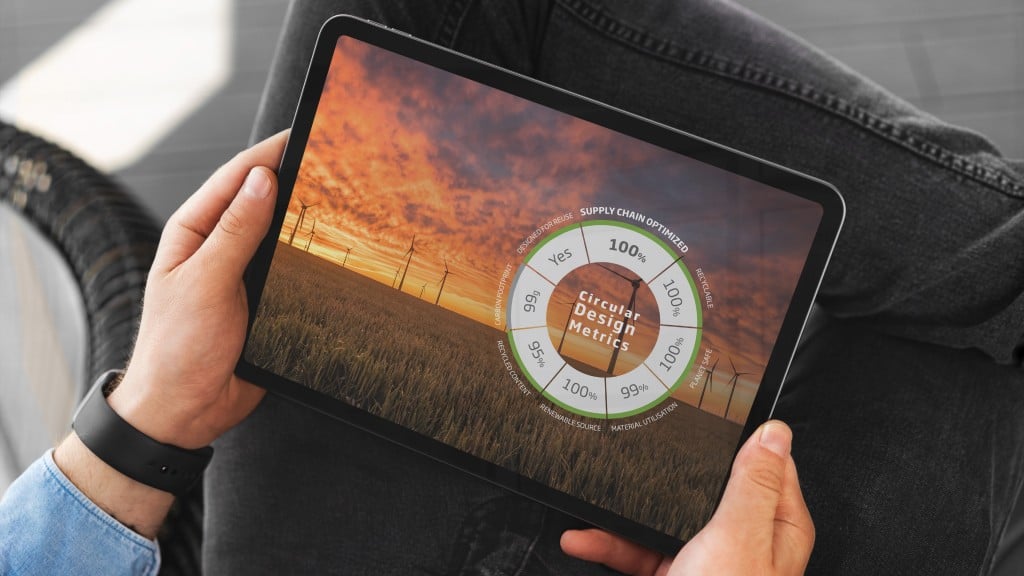
For a truly circular economy to work for consumer packaging, or any category of product, every link in the supply chain needs to play its role, from producers to retailers, consumers to recyclers. For fibre-based packaging providers, one of the big challenges involves navigating a complete redesign of packaging so that it can be made from recovered materials and is also easily recyclable once discarded by consumers.
Recyclers are required to adapt as well, by building adequate infrastructure and technology that can both handle the wide range of constantly changing incoming material, and producing the highly pure end-product needed to make new goods and packaging. All of this needs to be supported with buy-in from consumers, to first help optimally sort used materials at the source, and then to sustain demand for recycled content products, as well as both support and sound policy from government and regulators so that there is a level playing field with clear and consistent guidelines for all involved.
DS Smith, a manufacturer of fibre-based packaging headquartered in the U.K., runs mills, packaging plants and recycling facilities around the world and is a prime example of a producer that is well ahead of the curve on making real progress toward creating a completely circular economy for its products.
In Europe, DS Smith has a longstanding history as an innovator in sustainable packaging, with upward of 14 paper mills, multiple fibre recycling plants, and over 200 packaging manufacturing and related facilities. On the innovation front, just over the last year the company has been exploring the use of seaweed fibres as an alternative to paper, and as an alternative to the plastic barrier coatings used in food-grade packaging. In another project, work is being done to turn waste formerly destined for landfill, produced by a DS Smith mill, into enhanced input for soil conditioning and remediation in the agriculture industry.
In 2017, to expand their North American footprint, DS Smith bought the production and mill assets of Interstate Resources, an Atlanta-based paperboard and packaging products manufacturer. According to their Director of Recycling for North America, Toby Earnest (formerly with Interstate Resources), "They saw the growth potential and synergy that could happen in North America, and us as a good entrance into the market. Interstate had a 100 percent recycled fibre mill in Reading, Pennsylvania, and a virgin fibre mill in Riceboro, Georgia, which makes linerboard, as well as packaging facilities located on the East Coast."
A circular economy trifecta
In the spring of 2020, DS Smith officially opened their first dedicated fibre recycling facility in North America, in Reading, where they now process 5.5- to 6-million tons of OCC (Old Corrugated Cardboard) per year.
Since coming on board at DS Smith in 2017, Earnest has come to realize that recycling is at the heart of everything they do. "DS Smith is unique in packaging, as we are now a net recycler," he explains. "We recycle more than we actually produce in our mills."
"We built our recycling division from scratch once DS Smith came along. At our new, dedicated recycling facility we are at about 80 percent capacity, and can now provide about a half a million tons of recycled material, mostly OCC, to both the domestic market and our own mills yearly."
With the addition of their Reading recycling facility, the company is now operating what they call a "circular economy trifecta," due to its location adjacent to their paper mill and within a few miles of their packaging manufacturing facility. "To be that close is very special," he comments. "I don't know of any others, in all of the travels that I've had, even with the DS Smith mills in Europe, that are anything like it. It cuts way down on logistics costs - we just move material across the parking lot."
Their facilities being so close together also allows corrugated packaging to be produced and recycled in what Earnest calls a 14-day cycle, a two-week box-to-box process for corrugated cardboard, which also allows units to be recycled up to 10 times.
With respect to their focus on OCC, because it is a global commodity and due to extremely high demand for cardboard packaging, especially since the start of the pandemic with the significant increases in e-commerce from companies such as Amazon, there is a lot of pressure on the market, both domestically and internationally.
"If you look at the market globally as a whole, packaging demand is up almost 9 percent year over year, which is amazing," says Earnest. "That number is closer to 15 percent if you look at North America alone. This is putting a lot of pressure on the OCC market which is causing the pricing to go up. We have to recover these higher input cost increases as well, because a lot of our mills are 100 percent recycled material mills. Whether it be here or in Europe, we are all under that pressure when it comes to high demand for packaging."
A united effort for circularity
Sustainability is at the heart of the circular economy business model that DS Smith wants to promote and strives to be a part of.
"DS Smith has always wanted to be a part of the solution, not the problem," says Earnest. "In order to do that, we get out there and work with all businesses, whether it be packaging customers, or other customers, to talk about and implement recycling and sustainability. We work on improving their efficiencies, whether it's through supply chain optimization, reducing distances between supply parameters, or looking at total recycled content."
He says that for their packaging production plants, the circular economy starts with designing out all the items that aren't recyclable or which are hard to recycle.
"If you design material for recycling up front, it makes it easier for everybody throughout that whole supply chain," he continues. "Through our circular design principles, we try to accomplish that. We have over 700 designers within our company that are trained in circular design principles and promoting the circular economy. They're taught to design out the waste and the plastics in our packaging, and we are aiming for 100 percent recyclable packaging by 2023.
"We substantiate our recyclability and recyclable content claims through industry certification. All of our facilities, from the mills through to packaging and recycling facilities, are Forest Stewardship Council (FSC) and/or Sustainable Forestry Initiative (SFI) certified. They're all chain of custody certified, and re-certification happens on an annual basis, so we are audited once a year."
Similar responsibility also falls on the end users of the packaging products they provide, the retailers using packaging, which need to make sustainability claims as well. "They have to prove that their package is part of that chain of custody. All the different steps in the process, whether it be mills, the packaging manufacturers, recycling or our retail customers, they need to be certified in the process and require audits."
With respect to the way packaging is currently made, the biggest mistake they see in the industry is at the very start of the design process.
"You order a cellphone, and the size of the box is not right size for the packaging," says Earnest. "That's the biggest design flaw you see out there, is not designing packaging to fit the content. When we talk about the circular economy being reduce, reuse, recycle, that's the reduce portion. We need to optimize the fibre usage that we have, and not put more fibre than needed into packaging."
Changing the game with circular design metrics
DS Smith launched its Circular Design Principles for packaging in collaboration with the Ellen MacArthur Foundation in 2020. The principles used were developed to help both DS Smith and other companies design out waste and pollution, keep products and materials in use, and regenerate natural systems. Within the last year the company has trained its packaging designers to apply these circular design principles in the design process, and this past summer, introduced the industry's first widely available circular design metrics.
This tool uses eight different indicators to provide a clear indication of the circularity performance of any packaging, quantify it, and help identify areas with potential for improvement. It provides unique insight into how companies' packaging choices can reduce their impact on the environment, and through a collaborative process, DS Smith and its customers will be able to compare the environmental performance of various solutions.
According to Earnest's colleague Stefano Rossi, packaging CEO at DS Smith, "It has never been more important for companies to manage their impact on the environment. We want to show brands the beauty of the circular economy and allow them to explicitly understand what their packaging choices mean for that model. Our new Circular Design Metrics is a game changer in driving environmental performance in packaging. We're excited to use our expertise to help companies, large and small, on their journey to become circular-ready."
Joe Iles, circular design lead for the Ellen MacArthur Foundation, also commented on this latest tool for advancing the circular economy: "The design stage has a huge influence on how products, including packaging, are produced, used and what happens to them after use. DS Smith's Circular Design Metrics are a key milestone to help drive change toward a circular economy. As a strategic partner, DS Smith has the ability to make change happen faster by mobilizing its large design community and influencing its customers, many of which are global brands. And what's more, the company will also inspire many other businesses and designers worldwide."
Earnest adds that with the addition of their circular design metrics it will be possible to rate the impact of every design decision, and help customers create the most circular packaging solutions ever.
"That goes for everything in that package," he explains. "Whether it's supply chain optimization, recyclability, the carbon footprint associated with a product, or the recycled and renewable content of material used, we have various factors that evaluate a package before it goes out to our customer, and our circular design metrics give it a quantifiable score. It's another tool in our toolbox that we use and to make sure that we're driving hard for the circular economy and that sustainability model."
Those that manufacture the packaging used in the global economy have a key role to play in developing a circular economy. The circular economy metrics initiative is the latest tool that demonstrates DS Smith's leadership in this movement, and ongoing commitment to put sustainability first as a global producer of fibre-based packaging.
This article was originally published in the September 2021 edition of Recycling Product News, Volume 29, Number 6.



